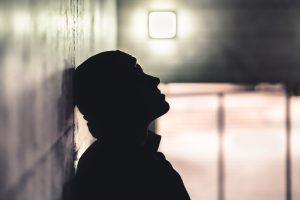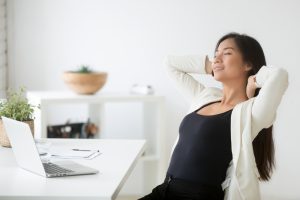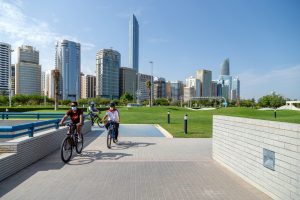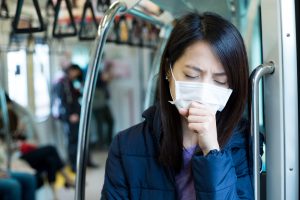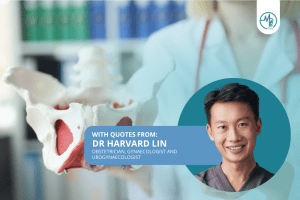Doctor On Call, or DOC for short, is a brand new series brought to you by Medical Channel Asia. This series aims to bring doctors and specialists from various fields to give you an introduction to common health and medical topics that you and the Asian population are interested in. In our 5th DOC, held on 13 Oct (Wednesday), from 8pm to 9pm (GMT+8), we have Dr Jade Kua, Senior Consultant, Emergency Medicine with Woodlands Health Campus (WHC), to talk to us about DARE to Save a Heart: How to use an automated external defibrillator (AED) to save someone in cardiac arrest.
This 3-part cardiology webinar series aims to educate the Asian population on the different aspects of cardiac conditions, ranging from the risk factors of heart diseases, to the most current updates on CPR, and the types of treatment options available after a heart attack.
For Part 1 of the forum, we have Dr Jade give us a short presentation on the DARE programme, which is a short basic introductory course to CPR and AED. In Part 2, Dr Jade answers some of the questions posted LIVE by our audience. Read below to find out what more about how you can potentially save a person’s life!
Presentation by Dr Jade Kua
DARE: Dispatcher-Assisted First REsponder programme
We need to DARE to do something in order to be able to save a life. We need to be brave, curious, and learn what to do.
This programme started in 2014, which is about an hour long, and a simple hands-on session to familiarise the public on how to recognise someone in a cardiac arrest, and how to start CPR in an urban setting, and also how to use an AED. This DARE programme is important because we have a rather low by-stander CPR rate and AED rate, which means few people dare to do something, even if they know what to do.
OHCA?
Many diseases out of COVID-19 are still very prevalent, and this includes cardiac arrest, and also cardiac arrest that occurs in the community. OHCA stands for Out-of-Hospital Cardiac Arrest. This number is indeed growing, from 1,377 cases in 2011 to 2.972 cases in 2018. While it is important to take care of ourselves physically, mentally and emotionally during COVID-19 pandemic, we still need to take care of ourselves and people around us regarding other chronic diseases, such as diabetes, high blood pressure, and cardiac arrest.
We focus so much trying to educate lay people and bystanders on how to do CPR and use and AED, because it can make a huge difference in terms of survival and neurological recovery for the patients. It can take somewhere up from 8 mins for the paramedic to arrive. If nothing was done, the neurological outcome (i.e. effects on the brain) is likely to be poor – as if they had a stroke. Cardiac arrest is not just the disease of the heart, but also the rest of the organs that are affected by the lack of blood pumped from the heart due to lack of CPR and AED.
And this is why we are reaching out to lay persons and bystanders to learn how to do CPR and use AED.
- No CPR and delayed defibrillation (i.e. 10mins later when the paramedics arrive): 0-2% survival
- Early CPR and delayed defibrillation: 2-8% survival
- Early CPR and early defibrillation (i.e. about 6-7min, enough time to run and get an AED): 20% survival –> the person who is very likely to save the person’s life is the lay person and bystander who can do defibrillation early
- Early CPR and very early defibrillation + early ACLS: 30% survival
Chain of Survival of a cardiac arrest patient
Dispatcher: the person who picks up the phone when you dial for the ambulance or emergency line. If you noticed that someone has collapse, we call the emergency number. You should stay on the line as they might guide you to do CPR or other relevant first-aid for the patient. The dispatcher will assist you in what to do –> hence DARE stands for dispatcher-assisted first responder.
2nd thing to do: expected to do CPR. Push hard and push fast. If there is an AED available, you are expected to use it. AEDs are meant for lay persons to use it. Then the ambulance will arrive and bring the patient to the A&E of a hospital.
When you start the process of saving that life, you are part of that system. You need to understand that you are not alone and is part of the system to save lives (i.e. not to take responsibility alone).
DARE vs other CPR/AED courses
Training duration
DARE is 60mins, and non-certified – this programme is essentially free. DARE programme was previously done to churches, schools, offices etc. and we teach them for free. When the people feels more invested and want to pay to do a full and formal certification, they then go for it. DARE is not meant to replace the formal certification, but more of an introductory course for those who do not have the time or money for the formal certification and assessment.
Other differences
The DARE programme is meant to show the few main and basic points of staying on the line, pushing hard and fast, and using an AED. The formal certification courses teach many other details: e.g. what to do if you are using an AED wet areas; or what to do if the person has hairy chest and you are unable to stick the AED patches.
Important messages
1. Stay on the line
What happens when you call 995 in Singapore: an ambulance will arrive within 8 to 12 mins for emergencies such as cardiac arrest and stroke. For such time-based emergencies, every minute that the patient does not receive help, there is a 10% higher chance of death. For that reason, sometimes they will send a fire-bike (i.e. a paramedic on a motorbike, that can get to the scene in 4-6min).
The dispatcher will guide you on how to start CPR, and use the AED if you have an AED available.
2. Push hard and fast
The dispatcher will then ask you to start CPR. In an urban society like Singapore, chest compression is enough. In the contxt of someone who is previously well up until he/she collapse, he has oxygen circulating in the body up until he collapses. In this situation, you don’t need to do mouth-to-mouth. You just have to push hard and fast, and the existing pool of oxygen in the body will be able to circulate if you push hard enough.
Generally you will push 4-6cm deep, and going at a rate of 100-120 beats per minute. The dispatcher will guide you: make sure the phone is on the speaker mode and listen to the instructions!
3. Use an AED
An AED is a wonderful machine made for lay people. There are many brands available, and some may look different from the others, but the functions are usually the same.
There will be an on/off button that looks just like any other common devices like remote controls. When you switch it on, there will be an automatic voice telling you what to do. If you have not stick the pads on, the voice will tell you to do so, so just follow the audio instructions. There are also clear visual instructions to tell you how to stick the pads, so just follow them will do as well.
It is really easy! We teach pre-schoolers to do that as well, and they often are able to follow as well. It is not complicated, and it is meant for lay people to use.
Once you put the pads on and switch the AED on, the machine will read the electrical rhythms of the patient’s heart. It will then tell you if you need to shock the patient or to continue CPR. You will not miss the button to shock the patient: it may be in red/orange or even glow up. The machine will read the rhythm of the heart every 2 minutes, and ask you to take your hands off to read the rhythm accurately. If it figures this rhythm requires defibrillation, it will tell everyone to stay clear so you won’t get electrocuted. Then you continue CPR. This cycle will happen every 2 minutes, until the ambulance arrive.
This is the main difference between AED and the manual defibrillation, which I use in the emergency department. Much as it saves me the 10 to 20 seconds, the AED is meant for lay persons. You do not have to make any decisions, you just follow the instructions until the paramedics arrive.
DARE programme’s achievements
This programme has won awards! It is not something that was thought up by myself on my own, but we have a team of professionals, who have worked in various hospitals across Singapore. We have on the AM.EI Golden Apple Awards 2017.
This is something that we will support you. Many people are afraid of doing CPR: what if I break the rib, what if the patient dies anyway, will I get sued? You need not be worried, because you are part of the system.
One of our real life DARE hero: Alaric, attended our DARE session several years ago, and his father had collapsed at home. His mum then called him and he told her what to do, and did the chest compressions until the ambulance arrive. His father survived and was discharged from the hospital 12 days later. We have many of such wonderful cases, and we urge everyone to go for such a programme.
Sometimes we feel that we are learning this for someone that we do not know, but many times, like in the story above, you are likely to be helping someone who you know and hence the issues of differences will not occur. Even in situations of complete strangers, they are also more likely to be thankful to you for saving their lives, and not complain about you removing their shirt.
What’s next in store?
- See Part 2 for the Question and Answer (Q&A) segment with Dr Jade Kua!
- If you have missed our previous DOC webinars, visit our Medical Channel Asia’s YouTube page, or you can also read the articles:





